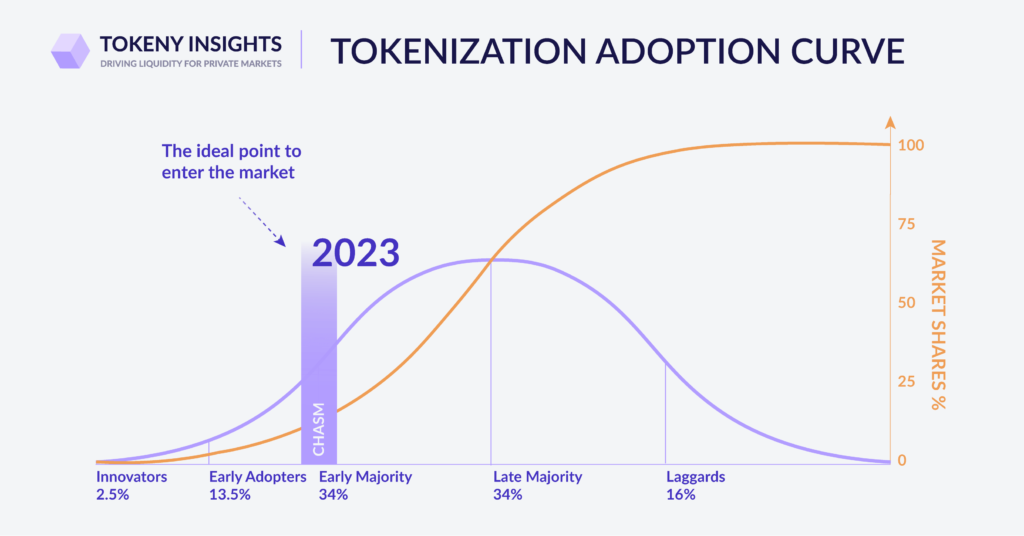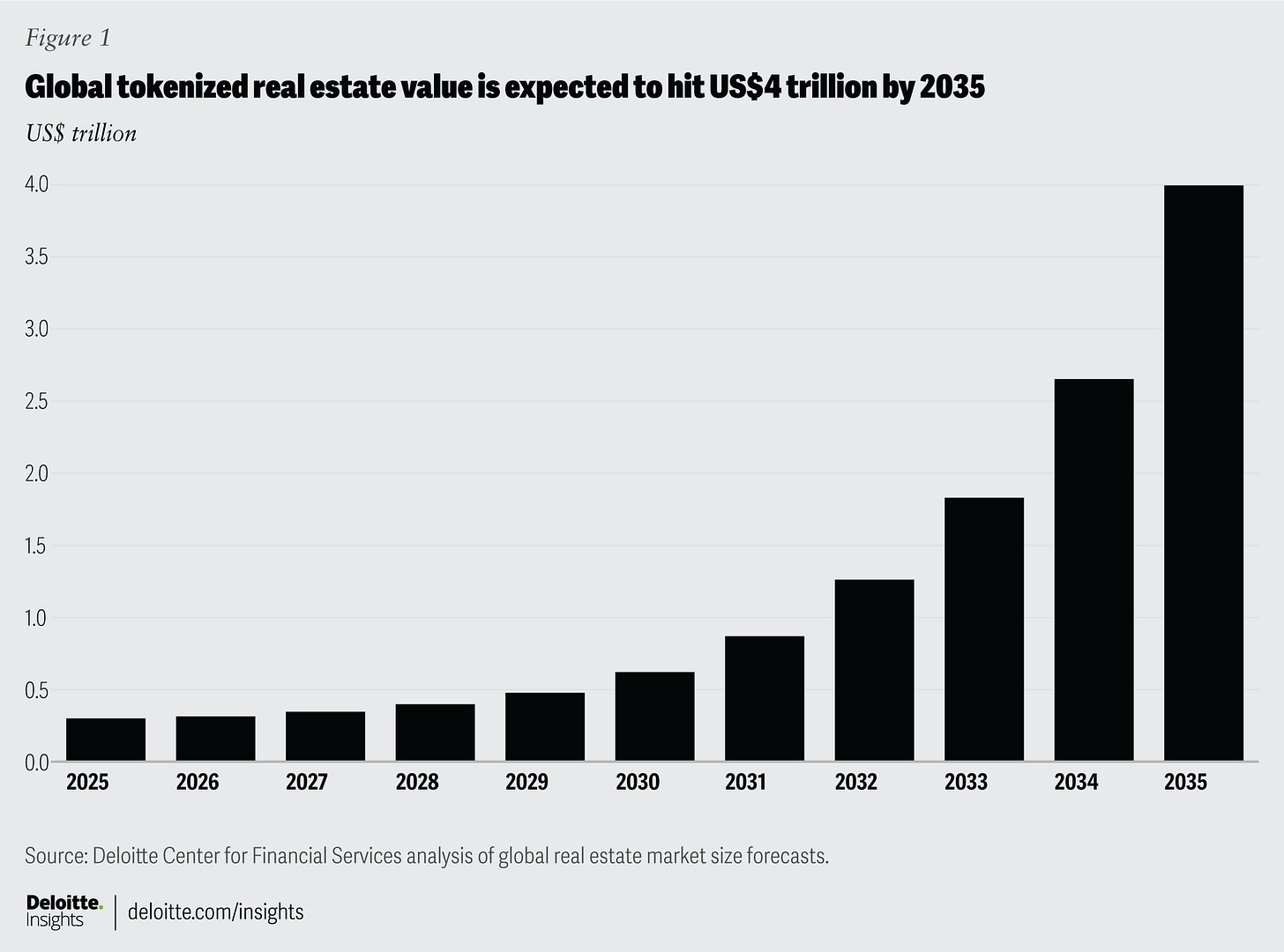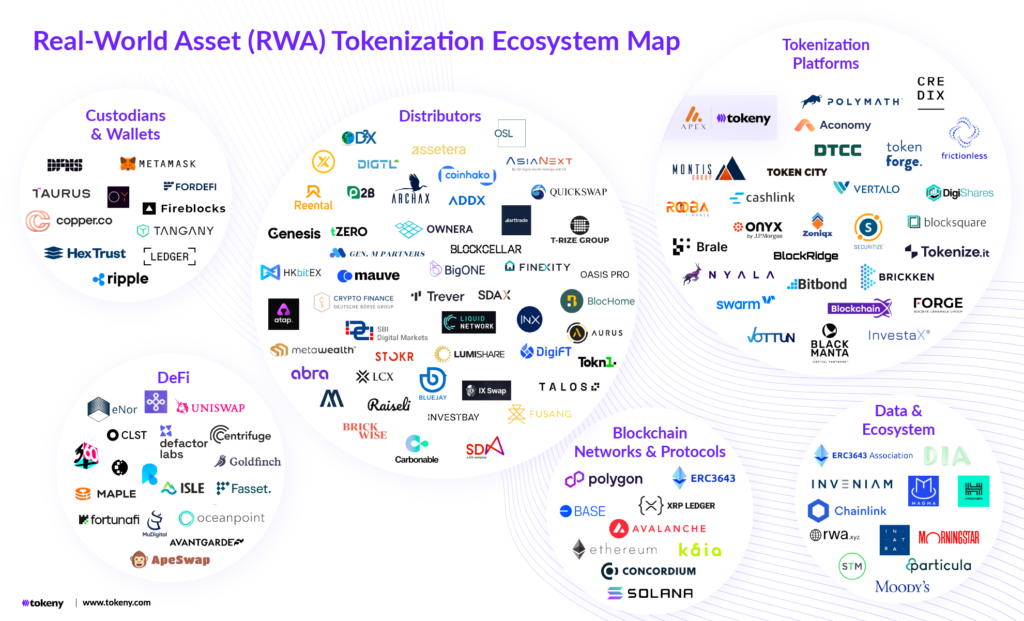End-to-End Tokenization: From Term Sheet to Secondary Liquidity in 30 Days
The Tokenization Surge, Why 2025 is the Year Assets Go On-Chain
The Tokenization Surge
Imagine raising capital, unlocking yield, and trading ownership, all in weeks, not years. In 2025, that vision is no longer hype: tokenized assets are projected to hit $30 billion, growing nearly 200 percent year over year, according to Boston Consulting Group and other industry trackers.
Tokenization is no longer a distant idea. Real estate, equities, and even alternative assets are finding a second life as crypto-native holdings. For startups, it’s a faster way to raise capital. For institutions, it’s a scalable infrastructure upgrade.
At its core, tokenization is simple. You take ownership of something, say a $5M property or a pool of equity shares, and convert it into digital tokens on a blockchain like Ethereum or Polygon. These tokens can then be traded, fractionalized, and moved across wallets as easily as sending ETH.
New regulations are also making this easier. The Markets in Crypto-Assets (MiCA) framework rolled out in Europe now sets clear rules for compliant tokenization (while attempting at launching my own stablecoin, I realized MiCA’s flaws too but that’s a topic for another day). Protocols aligned with frameworks like MiCA are already unlocking yields of up to 12 percent annually when assets meet both investor demand and regulatory clarity.
When I did my first tokenization, I learned fast that clear term sheets are your best friend for smooth launches. Without them, even the best contracts or tech won’t save you from legal headaches.
By the end of this guide, you’ll not only understand how tokenization works, you’ll also have access to templates that can take you from drafting a term sheet to launching tradable tokens in under 30 days.
In the next section, we’ll dive into why 2025 is the year to tokenize, with real-world stories like how a startup tokenized a $5M real estate deal and achieved secondary liquidity within a month.

Why Tokenize in 2025?
If 2024 was the year of experiments, 2025 is the year of execution. The difference? Compliance is no longer optional, it’s the edge. That’s why tokenization explained in 2025 looks radically different from the hype cycles of just a few years ago.
Take the story of Lofty AI, a startup that tokenized real estate properties into fractional tokens. By late 2024, they had closed deals worth millions, allowing investors to trade fractional property shares for as little as $50.
Case Study: Token2049 Dubai 2025: Projects showcased tokenized real estate deals, including the RAFAL Real Estate Development in Saudi Arabia, which piloted the Kingdom’s first property tokenization transaction with US-based blockchain firm droppRWA. This initiative enabled fractional ownership of commercial properties, lowering the entry barrier for investors and achieving secondary liquidity within weeks. The takeaway: tokenization is moving beyond pilot tests into real-world execution.
The regulatory backdrop is what’s unlocking this pace. In Singapore, the Monetary Authority of Singapore (MAS) expanded its Project Guardian initiative in 2024, building clear rules for tokenized bonds and funds. Europe’s MiCA framework is already live. Together, they create an environment where startups and institutions can launch with confidence, knowing compliance boxes are checked before the first token is minted.
So, why tokenize in 2025? Three reasons stand out:
Liquidity at speed: Deals that once took years can now hit secondary markets in 30 days.
Global reach: Investors from multiple jurisdictions can participate in fractional ownership with compliance guardrails.
Yield and stability: Fractional real estate investments, a model similar to tokenization in lowering entry barriers, have delivered stable annual yields of 7–8 percent, according to The Economic Times.
The momentum is clear, the market has moved past “if” and into “how”. And the “how” starts with choosing the right tokenization model.
In the following section, we’ll unpack the different tokenization models, equity, real estate, and hybrid, and show how to match the right approach to your asset and goals.
Understanding Tokenization Models
With 2025 set as the tipping point for tokenization, the big question is: which model fits your asset best? Not all are created equal, pick wrong and you risk liquidity headaches or regulatory delays.
Think of tokenization as a menu with three categories:
1. Equity Tokens
These represent company shares on-chain. Best for startups raising fast with fractional ownership and global reach. Pros: flexibility, accessibility. Cons: regulatory hurdles and potential illiquidity. Platforms like Securitize are leading here.
2. Real Estate Tokens
A crowd favorite, built on 1:1 backing where tokens map to property fractions. Upside: stability and trust. Tradeoff: slower setup (appraisals, structuring). Done right, they deliver 8–12% annual yields, per CoinDesk.
3. Hybrid / Revenue-Sharing Models
Mix equity and real estate features, e.g., tokens tied to rental profits. They offer yield plus upside, but face compliance complexity. Over 55% of 2025 tokenizations are hybrid, according to Messari. Some even plug into automated liquidity pools (ALPs), enabling real-time swaps but demanding strong oracle support.
Insider Tip:
Newcomers: Stick with equity or real estate, simpler and compliance-ready.
Pros: Hybrids and ALPs unlock next-level liquidity. See Messari’s RWA Market Map for deeper comparisons.
Choosing guide:
Equity → fast fundraising.
Real estate → stable yields.
Hybrid → flexibility + liquidity boosts.

Step-by-Step Guide to Tokenization in 30 Days
The models are clear, equity, real estate, hybrid. But here’s the spark: the $30B tokenized asset market in 2025 is exploding, powered by secondary liquidity and global adoption. The real question is: “How do I start my tokenization process in 2025?” This roadmap is your 30-day sprint.
Done right, tokenization unlocks automated returns up to 10% annually when integrated with DeFi protocols. Clarity and structure are everything. Let’s break it down.
Step 1: Define Your Objectives
Start with the “why.” Raising $1M for a startup or tokenizing property for secondary trading in 30 days? Set your asset value, investor profile, and liquidity goals now.
Step 2: Draft the Term Sheet
Your term sheet is the launchpad. In the U.S., SEC Reg D exemptions dominate. In Europe, align with MiCA. Tech choice matters too: Polygon for low fees or Base for integrations.
Insider note: My first tokenization almost collapsed from skipping legal review. Don’t cut corners here.
Step 3: Code Your Contracts
With terms in place, move to smart contracts. Start with ERC-1400 for security tokens, then plug in Chainlink oracles for real-world data feeds.
Example: This ERC-1400 repo is a solid starting point. Fork it, customize the mint function, and whitelist investors.
Step 4: Secure Liquidity
A token without liquidity is just code. Spin up a pool on Uniswap and align it with early investors. Add compliance tools: SumSub for KYC/AML plus MiCA checklists for regulators.
Step 5: Build User Access & Security
Next, investor experience. Enable MetaMask or similar wallets, connect to secondary markets, and book audits with CertiK orTrail of Bits. Security is non-negotiable.
Step 6: Test, Audit, Launch
Deploy on Sepolia testnet first. After testing, push to mainnet, activate liquidity pools, and open trading. Done right, term sheet to tradable tokens can happen in 30 days.

Exclusive Templates and Tools
You don’t need to reinvent the wheel. Below is a curated bundle of templates, repos, checklists, and a code walkthrough you can fork, copy, and adapt.
Term Sheet and Legal Checklist
Start with a clean term sheet and legal checklist so investors, counsel, and engineers align early. Chainlink’s tokenization process covers technical + legal steps.
Practical downloads:NVCA term sheet template,YC SAFE templates, plus token-specific docs from Tokeny and TokenSoft.
Smart Contract Boilerplates
If you’re building on EVM, use proven standards. ConsenSys ERC-1400 is the go-to, with OpenZeppelin contracts for security and Hardhat for testing.
💡 Insider note: Start from a baseline repo instead of coding from scratch, it’s faster and reduces audit risk.
Compliance Roadmap + KYC/KYB
MiCA alignment and securities laws should shape your structure. Use Tokeny’s legal kit and TokenSoft’s workflows to frame controls. For onboarding, SumSub offers plug-and-play KYC/KYB APIs.
If marketing in the EU, bookmark the MiCA explainer from ESMA.
Audit & Security Partners
Book an audit early. CertiK and Trail of Bits remain industry standards for smart contract security.
Case Study: Real Estate Tokenization
For scale: Chintai’s $570M real estate cashflow tokenization.
For mid-size:Token2049’s $5M property tokenization that reached secondary liquidity within weeks.
Competitive Edge: Models That Win in 2025
At this point, you’ve seen the playbook and even explored templates. But here’s the reality: not every tokenization model performs equally. Choosing wisely is where you carve out your edge.
Equity tokens are the growth engine. They’re flexible, fast, and global, perfect for startups seeking to raise capital without borders. Their downside? Higher regulatory complexity and liquidity swings when markets turn volatile.
Real estate tokens lean on stability. Backed by tangible assets, they’ve delivered yields topping 12 percent during 2025 bull runs, according to CoinDesk. They’re slower to structure but attract investors who prize steady returns over speculative upside.
Then there’s the hybrid and revenue-sharing model, the 2025 crowd favorite. Messari data shows hybrids lead tokenization volumes this year, offering adaptable structures that split profits and enable flexible compliance pathways. Traders in RWA forums often call hybrids “the token play” because they balance stability with upside.
Insider takeaway: Equity wins on speed, real estate wins on trust, hybrids win on adaptability. Pick based on your investor base and time horizon.
Risks and 2026 Outlook
Tokenization is powerful, but let’s be honest: risks remain. Market volatility can hit secondary liquidity, audits can miss edge cases, and over-leveraging yields can backfire. That said, careful design mitigates most issues. Using 200 percent buffers and ongoing Chainlink price feeds helps protect token holders while keeping assets tradable.
Looking forward, the outlook is optimistic. The tokenized asset market could reach $50B by the end of 2026, fueled by AI-driven liquidity tools that are already boosting trading efficiency by 25 percent. Even in worst-case scenarios, tokenization offers a flexibility edge over traditional assets: faster settlements, fractional ownership, and programmable compliance.
Your Action Plan: Tokenize and Scale
It’s time to put insights into action. Here’s a 5-step roadmap to turn ideas into tradable assets:
Define asset and economics.
Draft term sheet and code contracts, leverage ConsenSys ERC-1400 as a starting point.
Secure compliance and liquidity with MiCA checklists and SumSub KYC/KYB integrations.
Test, audit, launch, start on Base Sepolia testnet before mainnet deployment.
Enable secondary trading and market on DEXs like Uniswap or SushiSwap.
Power Up Your Tokenized Future
In conclusion, tokenization is the liquid core of modern asset markets. With templates, workflows, and smart contracts in hand, you can go from zero to a tradable asset in 30 days.
Miss this moment, and watch others unlock liquidity while you’re still drafting spreadsheets. FOMO is real, but so is opportunity.
Subscribe via canhav.com for guides on tokenization, crypto startups, and AI integrations, plus template updates straight to your inbox.



